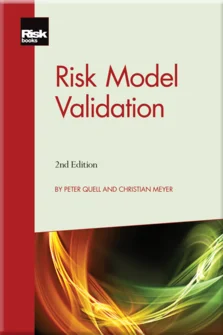Usage of Statistics in Quantitative Risk Models
Introduction
Basics of Quantitative Risk Models
Usage of Statistics in Quantitative Risk Models
How Can a Risk Model Fail?
The Concepts of Model Risk and Validation
Model Risk Frameworks
Validation Tools
Regulation
The Short-term Perspective
A Benchmark Model for Market Risk
The Medium-term Perspective
Modelling and Simulation
Data
Model Results
Conclusion
In the previous chapter, the basic elements of QRMs were introduced. As a reminder, these are:
-
a quantity of interest, the future value of which is uncertain;
-
a set of potential future scenarios that describe possible values of that quantity of interest; and
-
a statistic or risk measure to sum up the essential information obtained from the analysis of the potential future scenarios.
This chapter will explore how such an abstract framework can be implemented in practice, focusing on the set-up of a QRM that could be used in the financial markets, although the basic principles are transferable to other applications as well. The usage of statistics in QRMs is unavoidable in practice, and possible issues will be illustrated through examples. Finally, categorisations of risk and uncertainty will be presented, and there will be a discussion on if – and to what extent – statistics can help in QRMs.
SET-UP OF QUANTITATIVE RISK MODELS
The typical set-up of a QRM used by participants in financial markets is summarised in Figure 2.1. Starting from a current portfolio of financial instruments, such as equities, options and bonds, one needs to ask which profits or losses
Copyright Infopro Digital Limited. All rights reserved.
As outlined in our terms and conditions, https://www.infopro-digital.com/terms-and-conditions/subscriptions/ (point 2.4), printing is limited to a single copy.
If you would like to purchase additional rights please email info@risk.net
Copyright Infopro Digital Limited. All rights reserved.
You may share this content using our article tools. As outlined in our terms and conditions, https://www.infopro-digital.com/terms-and-conditions/subscriptions/ (clause 2.4), an Authorised User may only make one copy of the materials for their own personal use. You must also comply with the restrictions in clause 2.5.
If you would like to purchase additional rights please email info@risk.net











